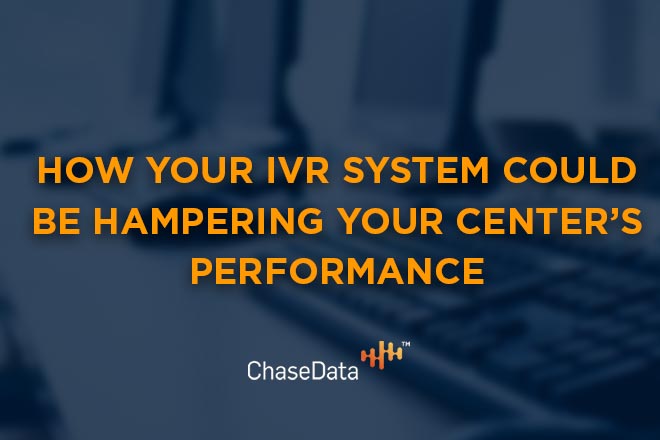Most modern call centers rely at least partially on an IVR system. The IVR - or interactive voice response - system is an integral part of modern customer service. Providing self-service freedom for consumers when done correctly, it can help direct call flow traffic effectively without additional cost - but only when done properly.
Could your IVR system be doing more harm than good for your contact center? If you’re using the wrong technology - or approaching the technique the wrong way - there’s a chance that the answer is yes. Here’s how to know if your contact center’s IVR system is a bigger problem than a solution - and how to fix it:
What is the Purpose of an IVR System?
Why do we use interactive voice response systems? After all, isn’t the point of live customer service agents to always have someone available to speak to consumers when they call our contact centers?
The truth is, the modern consumer doesn’t always want to speak to a live agent. While many still prefer this method of service, others would rather help themselves. This buffet-style approach to customer service is something that led many companies to create solutions involving pre-recorded programs that used menus and prompts to offer customers choices for their own service options. From directing calls to checking and updating account information and more, many things can be handled with the touch of a few phone buttons these days.
IVR takes that a step further by using voice commands to create interactive experiences in which the consumer still has the benefit of being specific through the use of voice, without having to spend the time or emotional energy that comes with speaking with live agents. It frees up those live agents to take care of other tasks, such as serving customers who would rather speak to a live human being than a machine. When done correctly, IVR can be a win-win situation made easy.
Where Can This Go Wrong?
Unfortunately, there are numerous ways that IVR technology can disappoint your customers. Some of these let-downs are minor inconveniences, but others lead to users abandoning calls altogether.
What don’t customers like about IVR systems? Here are some common complaints:
- Poor speech recognition. Speech recognition technology was one of the best things to happen to self-service in the customer service industry - but it continues to be something that many systems struggle with. Sometimes, it seems that no matter how clearly a person speaks and no matter how much effort they put into their diction, the program on the other end of the line still can’t understand what the are saying. For people with accents, speech impediments, or disabilities, the problem is even worse.
- Options and corresponding button commands are too numerous. In command-driven menus where the options for responses involve pressing related buttons, having too many options or too many buttons to press can be confusing for consumers. What’s worse is that many of these programs make listeners sit through an entire menu before they can repeat options, wasting precious time that could be used to serve a customer or solve a problem instead.
- Too much repetition. Nobody likes being asked to constantly repeat the same words or phrases over and over again. You train your call center agents to avoid making your callers or clients do this on live exchanges, so why should your IVR system be allowed to create the frequent need for repetition? This doesn’t just annoy consumers - it slows down the service process for everyone involved.
- Overall IVR system is outdated. For almost as long as there have been call centers in the sense that we know them now, there has been IVR technology. What was once a set of very simple, prerecorded prompts has evolved into an interactive experience that helps consumers navigate their way through self-service. However, many companies aren’t allowing their IVR system to evolve with the times. If your system feels like it has been in place without an update since the previous decade, consumers will recognize it as a lack of care on your management team’s part in updating your technology - and will not like the way it impacts their customer experience.
Addressing the Issue of the Problematic IVR System
There are numerous ways a customer service agency can approach the improvement of today’s IVR systems. Some great starting points include:
- Creating blended solutions that combine both touchpad use and voice command and response to give consumers more choice and control over their experience.
- Using more natural language - with the use of NLP - to design better, more organic exchanges.
- Integrate and sync all of your contact center’s channels so that consumers have an experience that provides them with the option to interact in more ways than one after their initial contact.
- Track common phrases and actions for individual consumers using software that allows you to offer tailored prompts first, such as a prompt for making payments to consumers who generally call exclusively for that reason.
- Upgrade your IVR system regularly and test the upgrades you make extensively to work out any design flaws or generate ideas for improvement early in their inception.
Remember: There’s Nothing Inherently Wrong with IVR Systems
It is important to remember that the IVR system as a concept is not the problem. There are very real reasons to use - and love - this technology. The key is finding the right system with the right features and implementing it correctly.
If you need to replace or simply shake up the way you use your IVR system, give the experts at ChaseData a call. We have everything you need to do IVR the right way - and give your consumers the kind of self-serve experience they’re really looking for.
